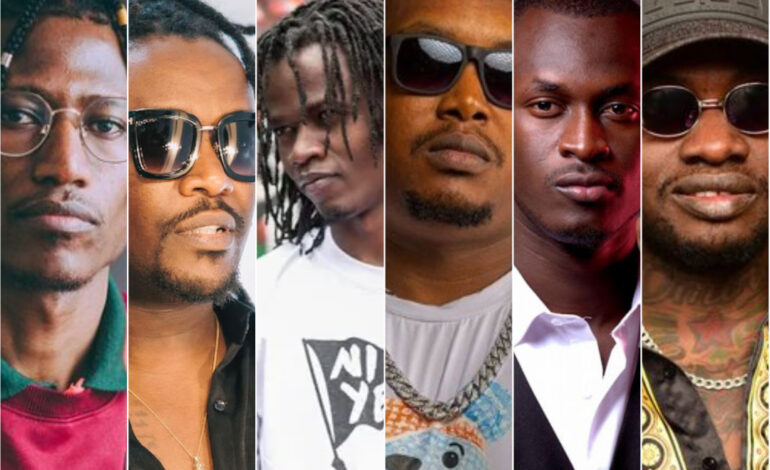In 2020, Uganda artist GNL Zamba released an album titled the “Spear Album”, which is a collection of stories of the past, the present, and the future! According to GNL Zamba, this album calls for unity and a spiritual awakening of all the tribes of the earth to recapture a higher consciousness around our shared origin. Zamba also says that this album is inspired by experiences of blackness and a universal Pan African Movement, “This is a message of unity to heal the world with the wisdom of the ancient while projecting ourselves to the future”.

That preamble can just be enough for my next chapter of the interconnection between Hip-Hop and Pan Africanism.
For starters, Hip hop is many things. Most recently is has become more of commodity, a commercial venture, but it has always been and remains a global culture that represents local realities. It speaks about where one is from – through rap lyrics, DJing, graffiti or breakdancing – by incorporating local slang, references, neighbourhood tales, sounds and styles.
Hip hop emerged in the 1970s in the South Bronx, in New York City in the US, among young, working class African Americans as well as Caribbean and Latino immigrants.
In its roots and manifestations, I argue, hip hop has also proven to be a powerful vehicle for spreading and shaping Pan Africanism.
Moving beyond borders
Pan Africanism is an acknowledgement of the social, cultural and historical bonds that unite people of African descent. It’s an understanding of shared struggles and, as a result, shared destinies. It’s also an understanding of the importance of dismantling the divisions among African people in order to work towards greater social, cultural and political solidarity.
This includes the increased and diversified migration of Africans to countries around the world. Today, an increasing number of Africans have lived in more than two countries. There have also been increased migrations to Africa from the African diaspora – people of African descent who are spread across the world. Some of these diaspora migrants are also Africans migrating to countries in Africa other than their own.
One artist whose work is both an articulation of these transnational trends and of an advancing Pan Africanism is Ghanaian-born, New York-based hip hop star Blitz The Ambassodor.

We see this throughout his entire catalogue, from songs like Emmet Still and Sankofa on his 2005 album Double Consciousness to Hello Africa on his 2016 release Diasporadical.
In Hello Africa he raps:
Just touched down, Ecowas passport. Internationally known, I give ’em what they ask for. From Accra city all the way outta Marrakech…
The new Pan Africanism
Pan Africanism is not a new idea, or movement. Its roots are pre-colonial. There continues to be serious investment in a Pan African agenda set by intellectuals like Kwame Nkrumah of Ghana, Julius Nyerere of Tanzania, C.L.R. James of Trinidad and W.E.B. DuBois of the US.
While we see growth in hip hop’s Pan African voice through artists like Blitz the Ambassador, we do also see movement away from a United States of Africa under a socialist state as a primary goal of Pan Africanists. What then are some of the primary objectives of Pan Africanism today? African music, especially hip hop, has always given us clues.
Hip hop is an important catalyst for Pan Africanism today. We are seeing a major cultural shift through collaborations between African and African diaspora artists, as well as the inclusion of Pan African elements in their music.
Some of these songs are significant in bringing together artists known for making social statements, such as Opps (2018) with Vince Staples (US) and Yugen Blakrok (South Africa) for the Black Panther soundtrack. There are many more, like the remix to Times Up (2020) with Sampa the Great and Junglepussy.
Zambia-born, Botswana-raised hip hop artist Sampa The Great spends her time between Australia and Botswana. Her album The Return (2019) was an important work that received much praise. From it, the songs Final Form and Energy are representations of hip hop’s Pan African voice.

In the songs’ music videos, for example, we see dance styles found in diaspora and African communities. We see facial paint designs like those seen in South Africa and masks like those found in Mali. In Energy she features British-Sierra Leonean artist Nadeem Din-Gabisi performing poetry in Pidgin English.
Collaborations
We’ve seen important collaborations between hip hop artists across Africa and in the diaspora that go back to the early 1990s. But we see an increase after 2010. When African artists started using social media and file sharing they were able to increase their collaborations.
In 2011, Senegalese hip hop pioneer Didier Awadi released the major collaborative project, Présidents d’Afrique (Presidents of Africa) featuring collaborations with artists from Burkina Faso, DRC, Kenya, Mozambique, South Africa, France and the US. It also sampled speeches from past leaders like Aimé Césaire, Nyerere, Nkrumah, Malcolm X and Martin Luther King.
And the growing presence of Africans in important positions in the US entertainment industry has meant these collaborations are beginning to happen in more mainstream platforms.
Two big budget projects that have attracted significant attention are the US film Black Panther (2018) and US pop star Beyoncé’s Black is King visual album (2020).
There are many important criticisms of these projects. Major labels prefer proven (profitable) formulas over artist innovation. There is a tendency towards a homogenisation – a lumping together – of Africa and a marginalisation of African artists’ voices.
But we also need to understand that both projects are products of the transnationalisation of African communities and identities. They exist in part because of the increased mobility of African communities around the world. We also must recognise their impact on helping to cultivate Pan African identities.
Pan Africanism is hip hop
There will be more of these projects produced. There will also continue to be these projects produced on smaller budgets. But imagine if Sampa the Great’s Final Form had a Black is King budget? Would there be criticism of this artist if she incorrectly used a particular African symbol?
Songs like Final Form and Hello Africa are celebrations of Blackness, in global spaces. This Pan Africanism is recognition that African peoples are transnational and multicultural. It is an understanding that African peoples must stand together. It is also a call to understand and respect the differences in our struggles and to resist the temptation of imposing “universal” models of liberation. Pan Africanism is also feminist, anti-homophobic and anti-imperialist.
The importance of African music and hip hop is that it also clues us in on what is going on with Pan Africanism. Pan Africanism is not a movement that faded away or only lives on among a small minority. It is dynamic, and has adjusted to new realities.


